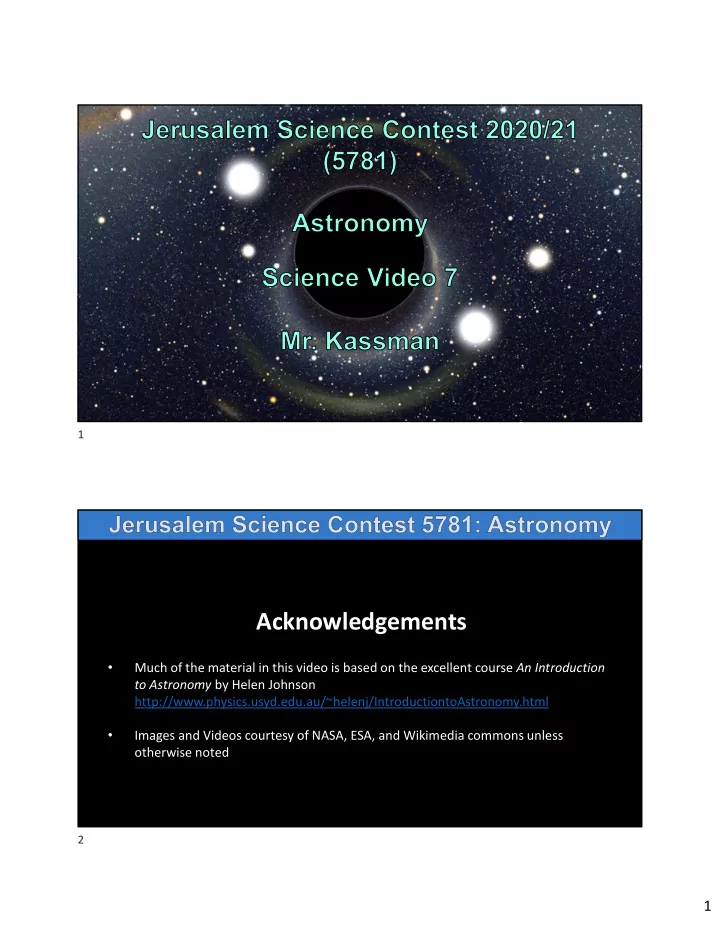

1 Acknowledgements • Much of the material in this video is based on the excellent course An Introduction to Astronomy by Helen Johnson http://www.physics.usyd.edu.au/~helenj/IntroductiontoAstronomy.html • Images and Videos courtesy of NASA, ESA, and Wikimedia commons unless otherwise noted 2 1
“Death” of Stars • Initial mass of ~ 0.6 M sun to 8 M sun White Dwarf Black Dwarf • Initial mass of ~ 8 M sun to 25 M sun Neutron Stars (Pulsars) • Initial mass > ~ 25 M sun Black Holes 3 image courtesy of Nick Strobel at www.astronomynotes.com 4 2
Black Holes 5 Escape Velocity 6 3
Escape Velocity • Greater distance (R) means lower escape velocity • Larger mass (of large object) means higher escape velocity 7 • Black hole is matter so dense that the escape velocity is greater than the speed of light • Not even light can escape! • This occurs for everything within a certain distance of the singularity – the Schwartzchild Radius 8 4
9 How do we detect black holes? 10 5
11 Supermassive black holes at the centers of galaxies 12 6
13 14 7
Gravitational Lensing 15 16 8
17 18 9
19 Now the first real image of a black hole, from the Event Horizon Telescope (EHT) 20 10
Recommend
More recommend